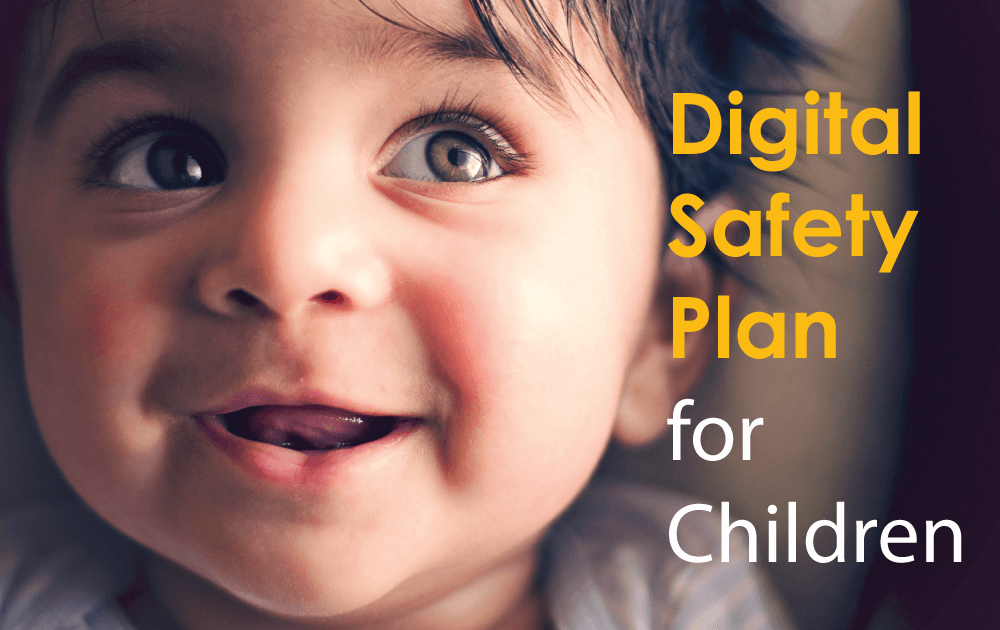A digital safety plan for children being leveraged; zero tolerance towards violence against children need of the hour.
Fresh from her experience in managing emergency situations, Dr. Yasmin Ali Haque smilingly handles the tsunami of problems as UNICEF’s Representative in India, lying next to her home Bangladesh.
She says UNICEF is working closely with the government in developing a comprehensive plan on digital safety for children. Digital literacy is key to ensuring that all boys and all girls stay informed, engaged and safe online. There is a need to galvanize the ‘zero tolerance’ towards violence against children. In a detailed interview to InnoHEALTH magazine, she answered a wide range of questions and elaborated at length, UNICEF’s programmes in India where the safety of children is emerging as a major concern.
Dr. Yasmin had joined as the UNICEF Representative in India in July last year and prior to that, she was Deputy Director of UNICEF’s Office of Emergency Operations where she played a leading role in the programming and policies for an effective UNICEF response for children in humanitarian crisis. She started her career in UNICEF in 1996 and held many appointments in challenging situations.
Also Read: 10 Latest Healthcare Innovations

Q. UNICEF is guided by the Convention on the Rights of the Child (CRC) and strives to establish children’s rights as enduring ethical principles and international standards of behavior towards children. UNICEF responds in emergencies to protect the rights of children. What are your views are the steps that can be taken to protect children from violence and to ensure their safety?
One important facet of the rights of CRC is to ensure that children grow in a protective and safe environment, free of any kind of violence and abuse. Preventing and responding to sexual violence requires strong collaboration among stakeholders from diverse walks of life. UNICEF is committed to working with the government, civil society organizations, corporates, media and all the other stakeholders to support society and families to ensure that children are safe and free from abuse and exploitation. Guided by the CRC, it is imperative to act now to break the cycle of violence against children and protect survivors of violence.
In recent years, India has made significant progress in addressing sexual abuse against children by having enacted legislation and acted on a large number of cases. The public has also become increasingly aware of sexual abuse cases that may have gone unnoticed years ago due to an increase in reporting on the issue. Digital media and immediate reporting have also contributed to this awareness. Still, a lot more needs to be done. Building on these positive developments, UNICEF collaborates with partners to enhance awareness of children and parents by focussing on the following stakeholders:
- Teachers and school authorities: Sexual violence in schools is a major area of concern. Schools should provide information on safety to children and online safety guidelines can be included in the curriculum. Schools also need to ensure that teachers are aware of the provisions of the Protection of Children from Sexual Offences Act.
- Children: Child-led initiatives empower children to become advocates of change, voice their demands and take leadership in the change itself. Listening to children is also key as they can become vital stakeholders in their own safety. Decisionmakers, including parents and teachers, should listen to children so that their views can be incorporated into policies.
- Civil society organizations, including faith-based and community-based organizations, can engage consistently with the communities and share with them important information around the need to protect children from any kind of violence and abuse and co-create local solutions.
- Media, both traditional and digital, plays a vital role in disseminating information, mobilizing public opinion and building a discourse around the issue of child safety. Effective use of digital technology for creating further awareness on child safety is another platform that is being leveraged. We need to ensure that all children, every girl, and boy, no matter where they live or what their background is, benefit from the learning opportunities and connectivity that the digital world can provide. However, along with the benefits that digital technology provides, it has also put young people at risk of harm online, including abuse, exploitation, trafficking and cyberbullying.
Q. UNICEF has recently launched a report called ‘Every Child ALIVE’ focusing on the number of newborn deaths in the country. Has India made any progress in curbing the under-five mortality?
India has shown 66% reduction in the under-five mortality rate between 1990 and 2015, nearly meeting its Millennium Development Goal 4 target. This is much higher than the global decline of 55% during the same period. This progress has been due to a holistic approach to health programming for children. However, the progress has been slower for new-borns and has also been inequitable between boys and girls, with the under-five mortality rate for girls currently being 11% higher, at 41 per 1000 as against 37 per 1000 for boys.
Q. Why are more girls dying in India than boys?
Girls have the advantage of being biologically stronger, yet sadly they are extremely vulnerable socially. The discrimination begins even before they are born. Though the gender gap has started shrinking due to the fast decline of mortality for girls as compared to boys in the recent years, the gap still remains high in many states. The neglect of the girl child is a much broader issue and needs interventions beyond health to address the social norms and cultural practices that act as barriers to bridging the gender gap. It will require working at both the policy level for creating an enabling environment. And at the community level, to build awareness and bring emphasis to the value of the girl child. It will also need increased investments in the availability of gender-disaggregated data for more informed planning.
Q. Please share with us some details about the immunization campaign in India.
Immunisation is one of the most cost-effective public health interventions that currently averts an estimated 2 to 3 million child deaths globally every year. India has one of the largest immunization programmes in the world, in terms of a number of beneficiaries, geographical coverage, and quantities of vaccines used, with nearly 26 million new-borns targeted for immunization annually. However, despite this effort, only 65% of the children in India receive full immunization during the first year of their life.
This translates to 9 million children not fully protected against preventable diseases such as Diphtheria, Pertussis, Tetanus, Measles and Preventable pneumonia. To address this issue, Government of India, with the support of UNICEF, WHO, and other partners, has launched Mission Indradhanush to achieve 90% immunization coverage by the end of 2018. UNICEF is also supporting the government for the strategic communication activities on immunization, in order to create further awareness on the need for complete immunization as well as create a discourse on the value of vaccines.
Q. What is the Measles-Rubella Vaccine Campaign and why do we need it?
The Measles-Rubella (MR) vaccine has been introduced as part of the Universal Immunisation Programme (UIP) in India to protect children from two diseases, Measles and Rubella, which have high mortality and morbidity respectively. Measles is one of the leading causes of death among young children. It is a highly contagious disease caused by a virus and spreads by coughing and sneezing. It reduces the immunity of the child, making a child vulnerable to life-threatening complications such as pneumonia, diarrhea and infection in the brain. Hence, the burden of diarrhea and pneumonia can also be indirectly reduced by eliminating Measles.
Rubella, although a mild viral illness, can lead to serious consequences if pregnant women are infected during early pregnancy. It can result in miscarriages, stillbirths and a set of congenital anomalies in the foetus and new-borns known as Congenital Rubella Syndrome (CRS), which is a cause of public health concern. CRS is characterized by multiple defects, particularly affecting the eyes (glaucoma, cataract), ears (hearing loss), brain (microcephaly, mental retardation) and heart defects – many of which are lifelong disabilities, requiring treatment, surgeries and other expensive care throughout life. Hence, it is important to eliminate these diseases. The MR vaccine is provided free of cost under the campaign.
Q. What is the burden of Measles-Rubella in India and globally?
According to WHO estimates, an estimated 1.34 lakh deaths were caused globally by Measles in 2015. Measles and related complications killed an estimated 49,200 children in 2015 in India, contributing nearly 36% to the global figures. An estimated 84% of the global decline in Measles deaths from 2000 to 2016 was due to Measles vaccination. In 2010, an estimated 1.03 lakh children were born with Congenital Rubella Syndrome (CRS) globally, of which an estimated 40,000 children were born with CRS in India.
The Government of India has resolved to eliminate Measles and control Rubella. The Measles-Rubella (MR) vaccination campaign is an important step in that direction. Measles immunization directly contributes to the reduction of under-five child mortality. UNICEF is a key partner in the Ministry of Health and Family Welfare’s rollout of the ongoing Measles-Rubella Vaccination Campaign, which is now in its third phase and has vaccinated 7.7 crore children in 16 states till date (3 April 2018). The MR Campaign targets around 41 crore children, making it one of the largest ever immunization campaign of its kind. It aims to eliminate Measles and control Rubella by 2020. The vaccine has already been rolled out in several states and will soon be launched in Assam, Haryana, and Punjab.
Q. How safe is the Measles-Rubella vaccine?
The Measles-Rubella (MR) vaccine is a safe and cost-effective vaccine that has been available for the past 40 years. The presently used vaccine is a WHO-prequalified vaccine and is licensed by the Central Drugs Standard Control Organization of India. As many as 165 WHO member countries provide Measles second dose in their national immunization programme. The Rubella vaccine has been introduced in 159 countries. India, along with 10 other member countries of South East Asia region of WHO, has resolved to eliminate Measles and control Rubella and Congenital Rubella Syndrome (CRS) by 2020.
The surveillance of Adverse Events Following Immunisation (AEFI) is an integral part of the MR vaccination campaign. AEFI management kit is provided at all vaccination session sites including schools so that immediate response can be initiated following an AEFI.
The Government of India has recently amended AEFI management protocol. Now Adrenalin injection is part of each AEFI kit, which is life-saving in case of anaphylaxis. Both public and private sector medical practitioners and health workers are trained prior to MR campaign to handle such adverse events.

